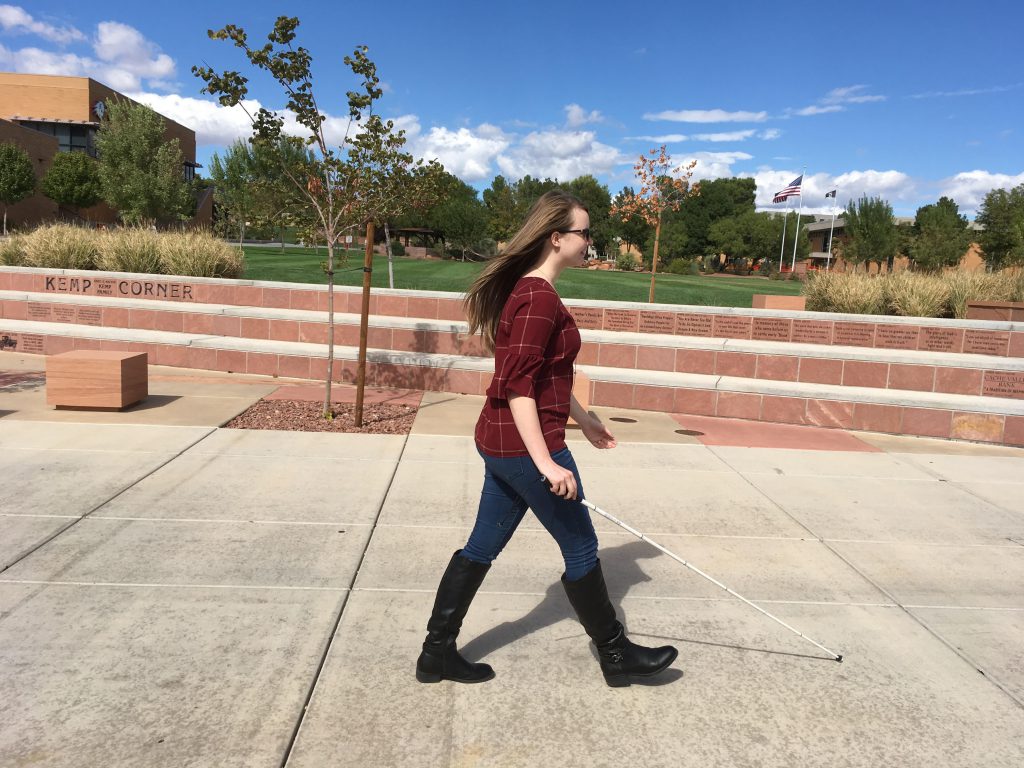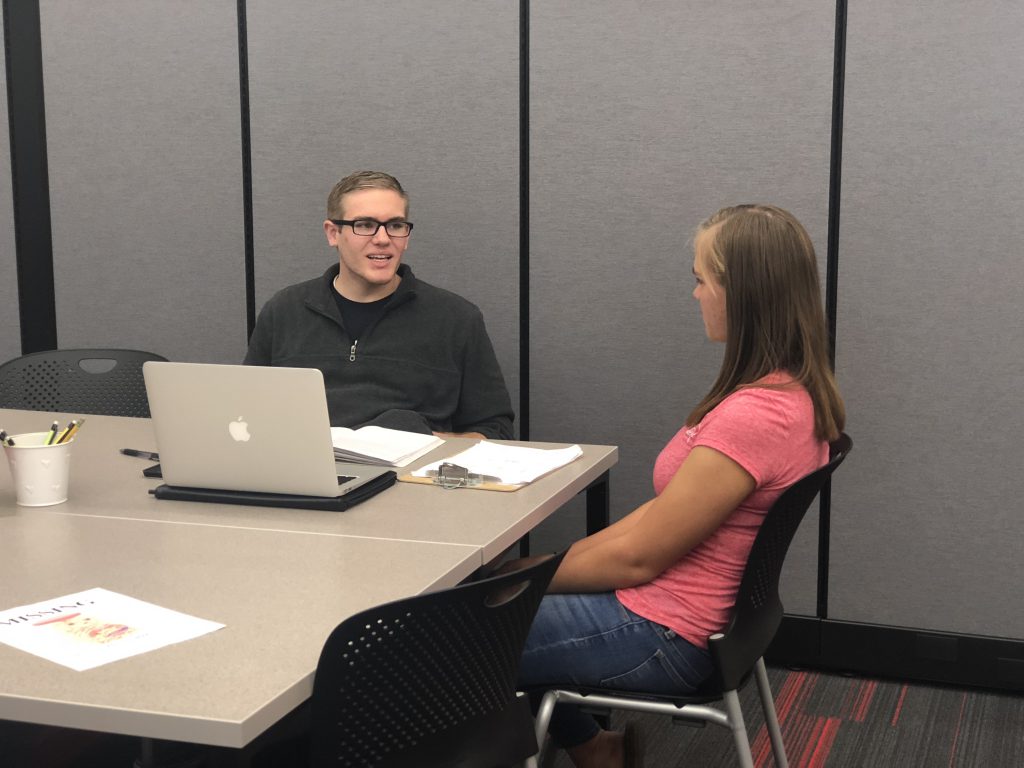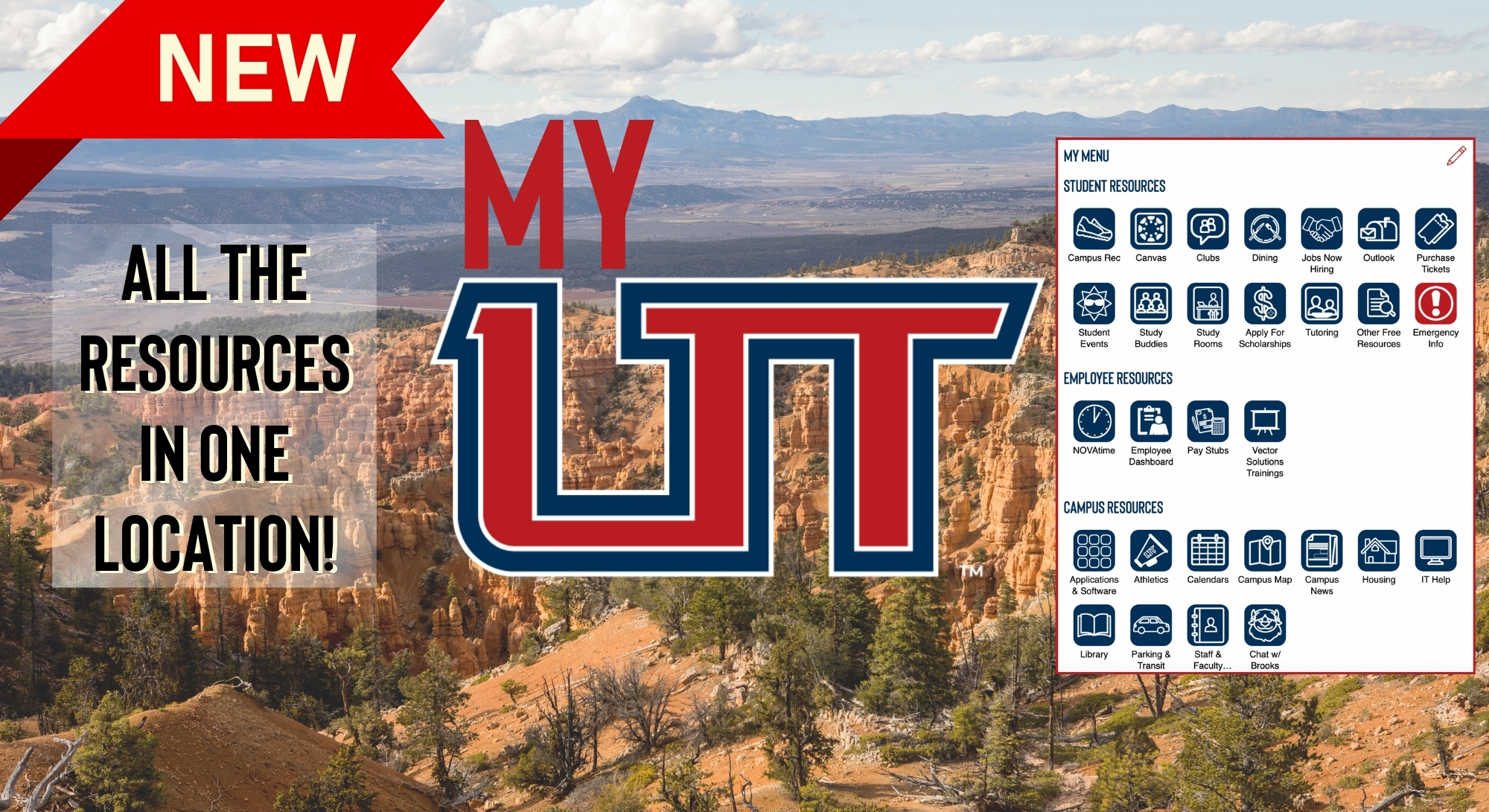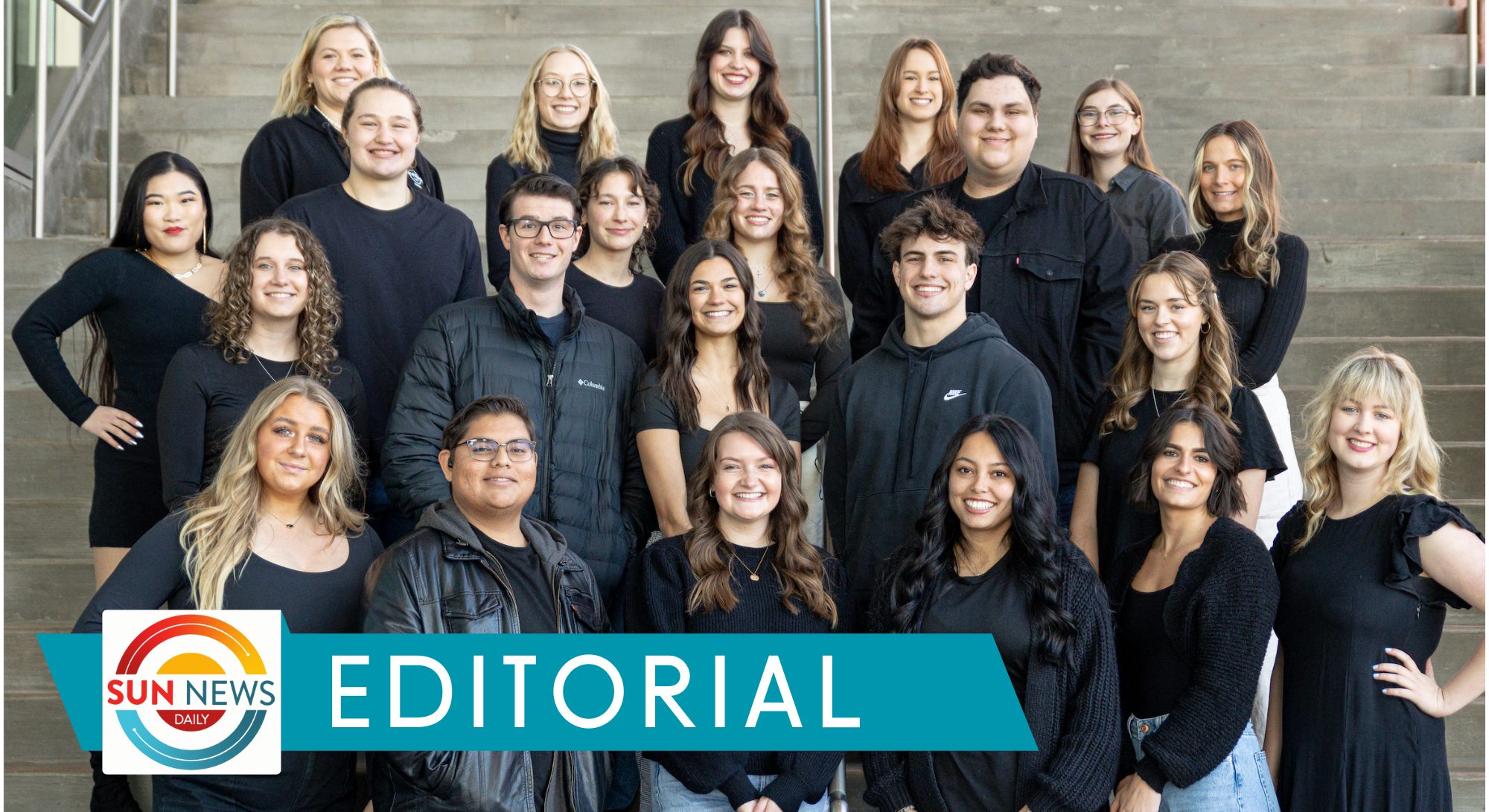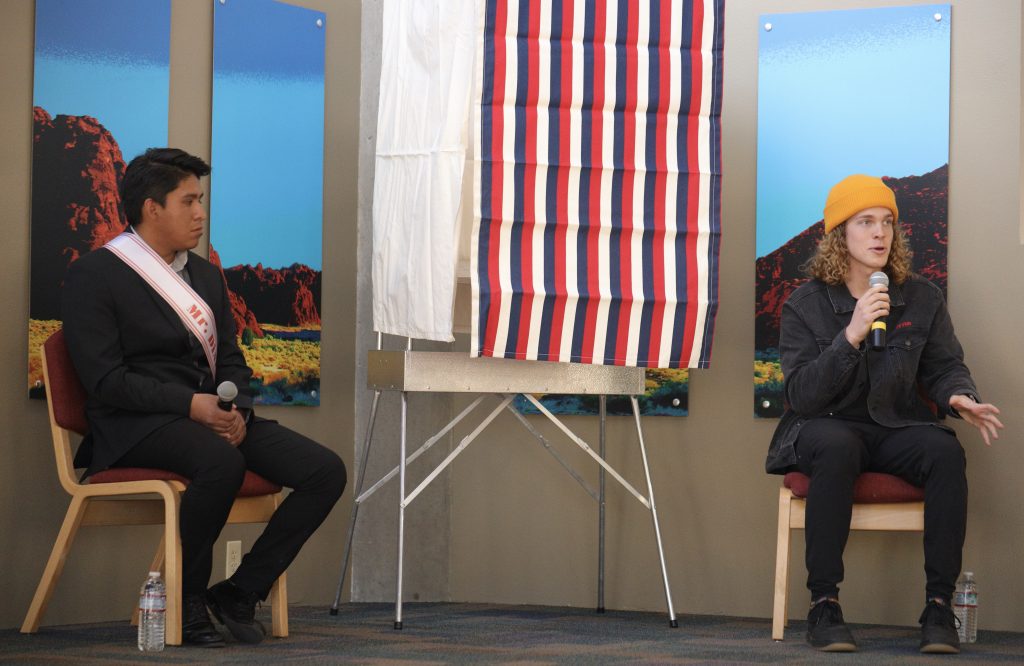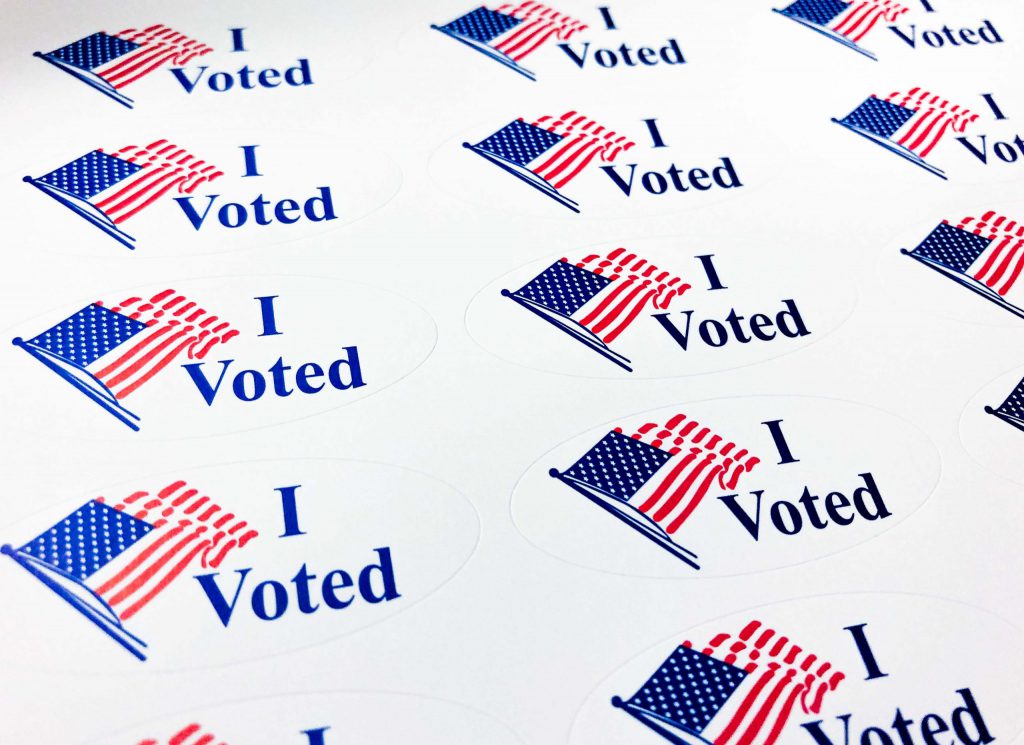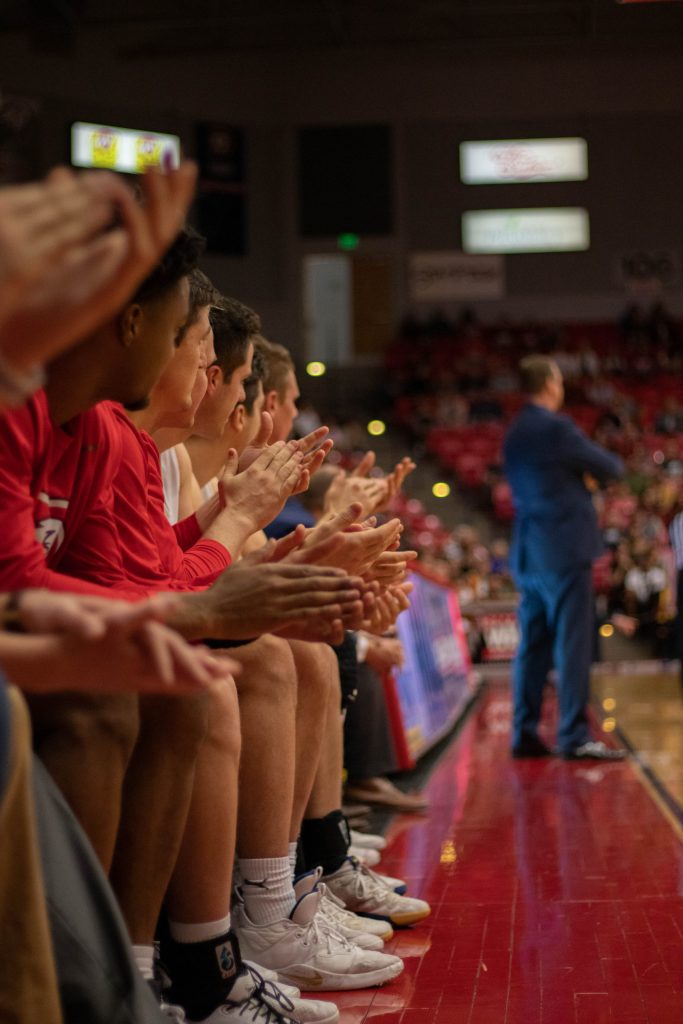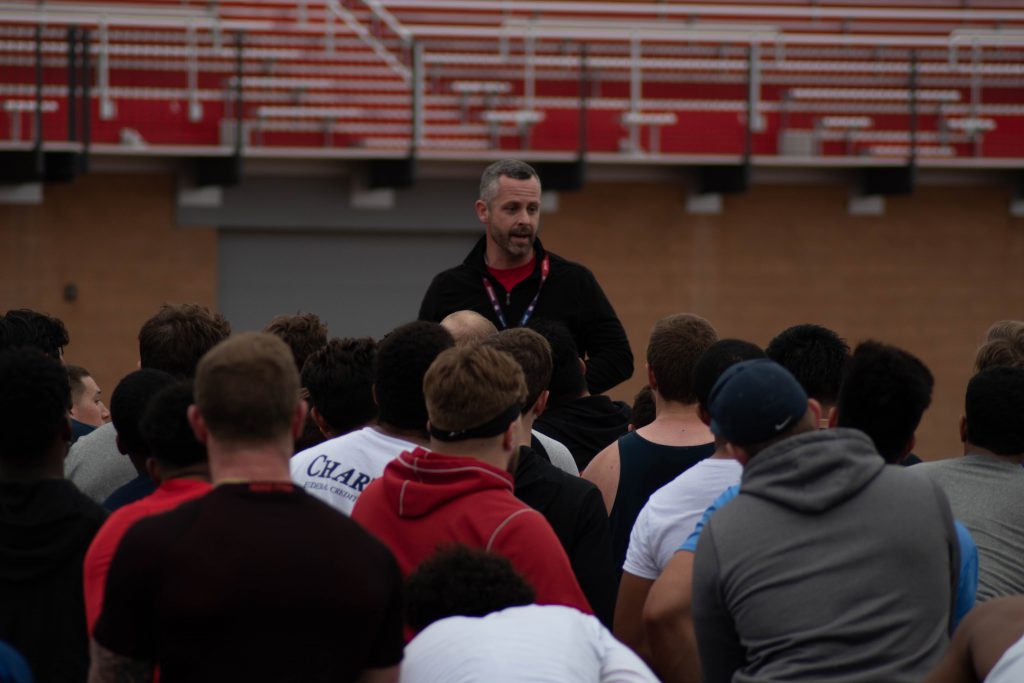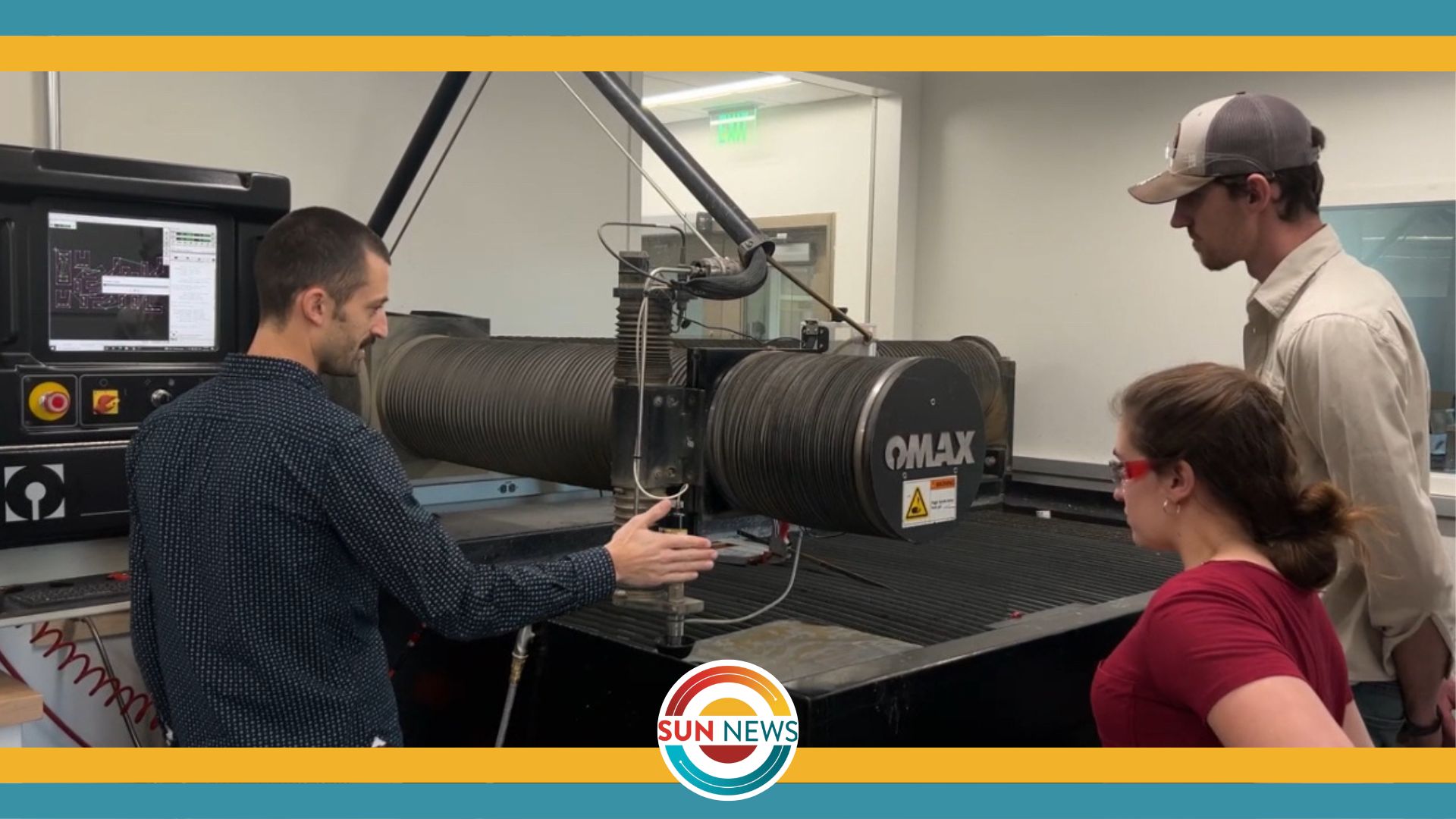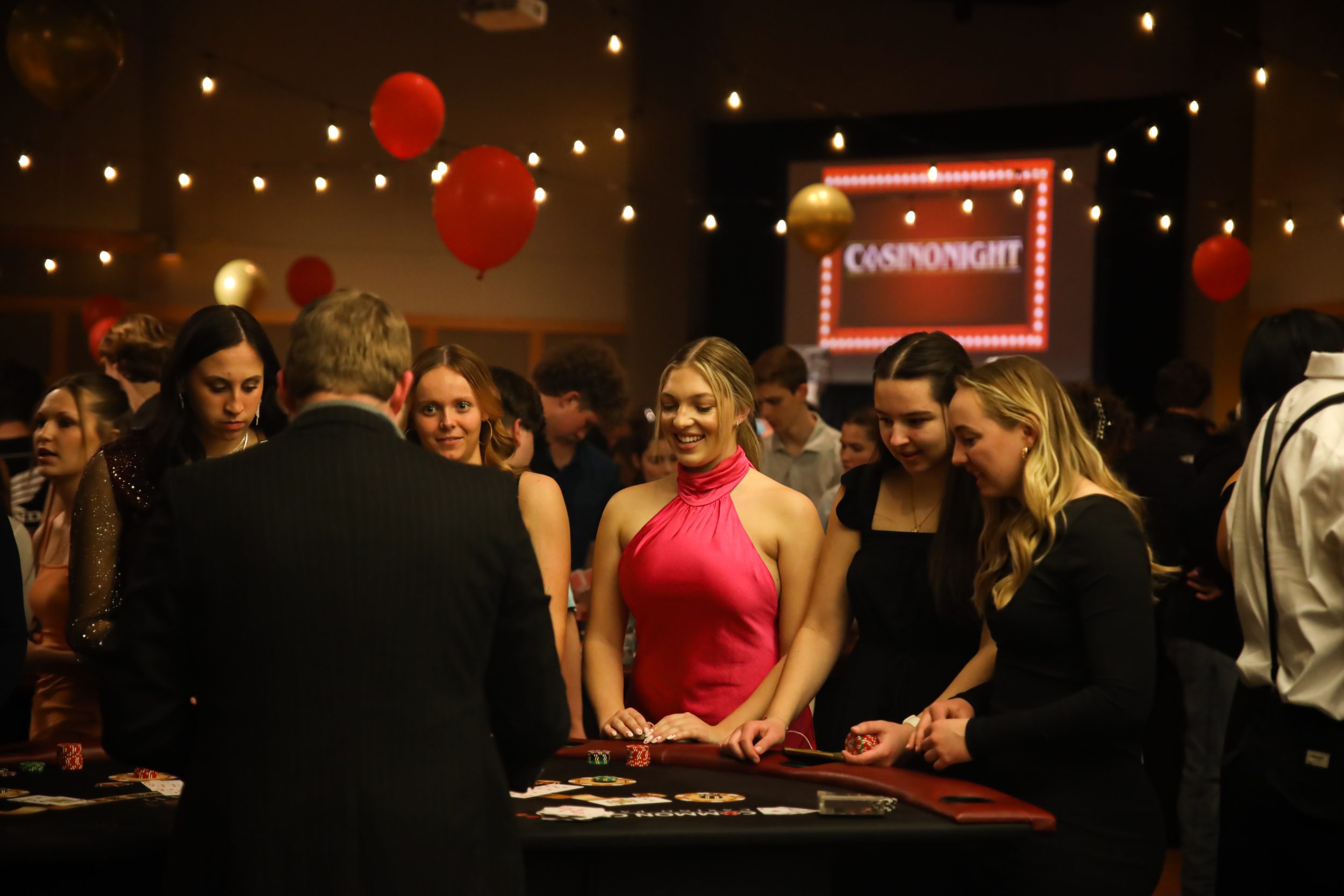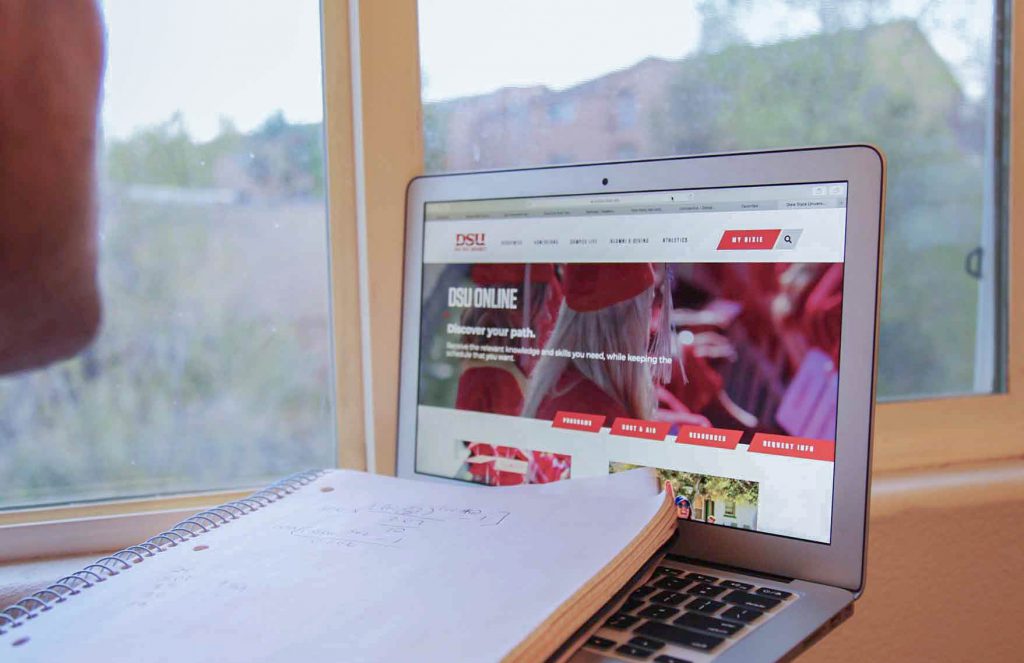Over 80 employers from several states came to Utah Tech University to participate in a career fair Feb. 22 in the Gardner Ballroom.
Hosted by Career Services, the fair was organized in hopes of helping guide students on their path to finding a career. Over 300 students were in attendance.
Leann Weibert, a career coach for the College of Science, Engineering and Technology, was in charge of the career fair this semester. In preparation, she advertised for it, put different materials together, contacted companies and communicated with catering services and facilities.
“This career fair is where students can actually see what these employers are doing and talk to the employer face to face and find out what kind of positions they have,” Weibert said. “It helps them prepare to apply for that kind of position, and it helps get them ready to find a career.”
Among the different employers in attendance, Utah Behavior Services had a booth set up and informed students of the career options that can be found within healthcare services.
“We actually have a lot of our members in our office started in our registered behavior technician position, which is typically where we would find them in a college setting,” said Saige Hayes, the clinical director for the Utah Behavior Services office at the St. George location. “I started here as a student at Utah Tech, so we really like to find our people and like to help them grow in whatever area they want.”
There were numerous other employers at the fair including:
Weibert said: “This fair gives students the opportunity to network with employers, and if they’re applying for positions or looking for positions, it is a great way to find out what’s available. Just taking that time to present themselves in front of employers and learning more about them is really important for students.”
Brandon Lopez, a freshman finance major from St. George, attended the fair to see if there were any financing positions open to give him job experience while still in college.
“I was hoping to gain as many options as possible for the experience, and what I’ve taken away from the fair is definitely a different outlook,” Lopez said. “There’s a lot of different jobs that I didn’t realize required finance, and it kept my mind more open.”
The next Career Services event will be Networking Nights, a collaboration with the Alumni Ambassadors, aimed at helping specific majors learn more about what jobs are offered within different areas of study. This event will be March 4 and March 5 from 6 p.m. to 8 p.m. in the Alumni House and will be targeted toward majors related to business. Students can register for the event on Handshake.
Although the career fair may be over, there are many ways students can continue looking for a career. Weibert encourages students to make an appointment with a career coach at Career Services so a coach can help guide them in the right direction for a career.
“Be open to trying new things and giving things a shot,” Hayes said. “Develop a better idea of where you’re wanting to grow into and understand how companies can help you get there. Make sure that you’re going for an employer that’s going to help you invest in you.”





